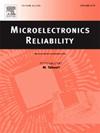Stress–strain analysis and optimization of BGA stacked solder joints under extreme temperatures based on orthogonal design and grey relational analysis
IF 1.9
4区 工程技术
Q3 ENGINEERING, ELECTRICAL & ELECTRONIC
引用次数: 0
Abstract
A finite element analysis (FEA) model of Ball Grid Array (BGA) stacked solder joints was established, and the stress–strain behavior under extreme temperature conditions was simulated. Using an orthogonal experimental design method, the influence and significance ranking of four structural parameters—solder ball diameter, solder joint height, pad diameter, and joint pitch—on the stress and strain of the solder joints were analyzed. Grey relational analysis was employed to determine the correlation between these structural parameters and solder joint stress. A multi-objective optimization of stress and strain was then performed based on orthogonal experimental results to identify the optimal combination of structural parameters. The results show that, with a confidence level of 95 %, solder ball diameter and joint height have a significant effect on stress and strain in BGA stacked solder joints. The influence ranking of the four structural parameters on solder joint stress is as follows: solder ball diameter > solder joint height > joint pitch > pad diameter. The optimal combination of parameters is: solder ball diameter of 0.60 mm, solder joint height of 0.52 mm, pad diameter of 0.50 mm, and joint pitch of 0.96 mm. This configuration reduces the maximum stress and strain under extreme temperature conditions by 14.2 %, thereby effectively improving the reliability of BGA stacked solder joints under extreme temperature conditions.
基于正交设计和灰色关联分析的极端温度下BGA堆叠焊点应力应变分析与优化
建立了球栅阵列(BGA)堆焊点的有限元分析模型,并对其在极端温度条件下的应力-应变行为进行了仿真。采用正交试验设计方法,分析了焊球直径、焊点高度、焊盘直径、焊点间距4个结构参数对焊点应力应变的影响及显著性排序。采用灰色关联分析确定了这些结构参数与焊点应力之间的关系。基于正交试验结果,进行应力应变多目标优化,确定结构参数的最优组合。结果表明,在95%的置信水平下,焊球直径和焊点高度对BGA堆叠焊点的应力和应变有显著影响。4种结构参数对焊点应力的影响排序为:焊球直径>;焊点高度>;节距>;垫直径。最佳参数组合为:焊球直径0.60 mm,焊点高度0.52 mm,焊盘直径0.50 mm,接头间距0.96 mm。这种结构将极端温度条件下的最大应力和应变降低了14.2%,从而有效提高了BGA堆叠焊点在极端温度条件下的可靠性。
本文章由计算机程序翻译,如有差异,请以英文原文为准。
求助全文
约1分钟内获得全文
求助全文
来源期刊

Microelectronics Reliability
工程技术-工程:电子与电气
CiteScore
3.30
自引率
12.50%
发文量
342
审稿时长
68 days
期刊介绍:
Microelectronics Reliability, is dedicated to disseminating the latest research results and related information on the reliability of microelectronic devices, circuits and systems, from materials, process and manufacturing, to design, testing and operation. The coverage of the journal includes the following topics: measurement, understanding and analysis; evaluation and prediction; modelling and simulation; methodologies and mitigation. Papers which combine reliability with other important areas of microelectronics engineering, such as design, fabrication, integration, testing, and field operation will also be welcome, and practical papers reporting case studies in the field and specific application domains are particularly encouraged.
Most accepted papers will be published as Research Papers, describing significant advances and completed work. Papers reviewing important developing topics of general interest may be accepted for publication as Review Papers. Urgent communications of a more preliminary nature and short reports on completed practical work of current interest may be considered for publication as Research Notes. All contributions are subject to peer review by leading experts in the field.
 求助内容:
求助内容: 应助结果提醒方式:
应助结果提醒方式:


